- Skip to main content
- Skip to header right navigation
- Skip to site footer

TV News Check
Broadcast Industry News - Television, Cable, On-demand

The Assignment Editor 2.0: More Collaboration, Newer Tools
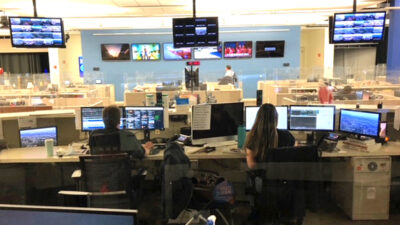
Assignment editors, stalwarts of the TV newsroom, are evolving into a more digitally centric, collaborative and decentralized force, and their time-honed skills of scrutiny and being the newsroom’s trusted gatekeepers are more important than ever. Above, the assignment desk at KNTV-KSTS San Francisco. ( Photo by Gonzo Rojas )
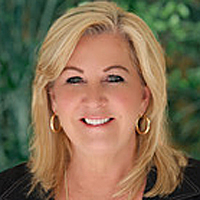
Back in the late 1990s and early ’00s, when Cater Lee was a reporter for the likes of KNBC and KCAL in Los Angeles, the assignment desk was centrally located in the newsroom. Its editor likely spent extensive time across their day scrolling through police scanners, reading press releases and fielding tipster calls to identify news stories. From it emerged a dictation of Lee’s day.
“My story was already decided for me before I walked into the door,” says Lee, who’s now VP of news and content at Spectrum News 1 in Southern California and Texas.
Purveyors of the newsroom’s assignment desk today, however, are typically less head coach and more quarterback, fronting colorful offenses filled with audibles, option plays and other collaborative trickery that’s designed to always push the ball forward. In other words, story dispersal in a newsroom has increasingly become a team effort, with reporters and producers having more of a say in what makes it to broadcast. Digital technology has also chipped away at the relevance of many dinosaur-era tools assignment editors used to rely on so heavily.
But as the job changes, assignment editors remain a dedicated folk, dug into the frontlines of journalism’s war with mis- and disinformation, while doing their best to help generate broadcasts with wider-reaching community impact. Always, they’re relegated to behind-the-scenes grunt work, and rarely do they get their due.
“Assignment editors are absolutely underappreciated in their role in a newsroom,” says Julie Wolfe, news director at Tegna’s NBC affiliate KING Seattle. “The biggest way to tell the difference is when you work in a newsroom that has a poor assignment desk and then you work in a newsroom with a strong assignment desk.”
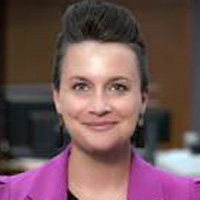
The capable assignment editor, she observes, will “know all the information”: facts to support a package’s viability, sources that a reporter can contact to round it out, and whether a story is worth any airtime to begin with.
A presence like that in a newsroom matches the significance of an engine in a car, as one assignment editor puts it. Wolfe says assignment editors are like “orchestral conductors,” while additional metaphors that float through interviews stem from human biology. One editor calls the assignment desk the newsroom’s brain; others liken the role’s import to that of the heart or central nervous system, for it’s the assignment editor who pumps data to the farthest reaches of the newsroom, which of course now stretches well beyond the walls of an office building.
Social’s Key Role
Along with an innate sense of what makes for a quality newscast, to effectively manage the assignment desk, editors need top-flight organizational and communication skills, just as they have for decades. These days, familiarity with the social media universe is of equal consequence.
While his team of 10 assignment editors won’t be getting rid of their police scanners anytime soon, Gonzo Rojas, assignment manager at NBC-owned KNTV and Telemundo 48 (KSTS) in the San Francisco Bay Area, marvels at Twitter’s near-supplanting of relatively old-timey technology.
“Twitter’s huge,” he says. “When it comes to breaking news, often we’ll see it on Twitter now before we hear it on police scanners, which is just incredible.”
Darren Whitehead, digital desk lead at another Tegna NBC affiliate, KUSA Denver, says Colorado police scanners are encrypted, but monitoring Twitter helps him pick up the slack.
“Most of the ways that the police departments and fire departments are communicating with us is they’re putting out [updates] on social media, and usually it’s not immediate, it’s well after something has happened,” Whitehead says. “We get calls from people in the community being, like, ‘What the hell is going on down the block from me?’ Then we have to call [the responsible agency], and then they tweet out to everyone — without calling us back — all the information.”
Assignment editors set up Tweet Deck channels, or Social News Desk dashboards, where they follow various government agencies, other news sources like the Associated Press and additional relevant accounts where prospective stories may pop up. Dataminr alerts help inform assignment editors, too; neighborhood-focused Reddit forums and community-based apps like Nextdoor can sometimes supply story ideas as well.
Then, there are community-related Facebook groups, which one assignment editor says she joins using a public profile associated with their news team position. Another longtime story assigner says she taps younger newsroom colleagues to examine Instagram, Snapchat and other social media platforms they might be more comfortable navigating through.
Scrutiny’s Imperative
Like in the past with press releases — though assignment editors still lift stories from those on occasion — they can’t take what’s written online at face value. The same can be said for what citizen tipsters tell the assignment editor over the phone or in emails, as well as what public information officers say.
“People ask me what the hell I do, and I always tell them, ‘Well, the assignment desk is usually ‘first response,’” Whitehead says. “You gotta sift through the bullshit.”
While they may have always prioritized backing up facts, with sources, data and other means, assignment editors in 2022 say there is an added emphasis on getting story facts unquestionably correct.
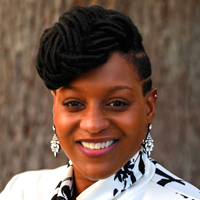
“There are some stations that report solely off of what they hear on the scanners. We are not that station,” says Jamila Elder, assignment editor at WRAL, Capitol Broadcasting’s NBC affiliate in Raleigh, N.C. “You dig deep, you reach out to your contacts and you wait until you get [your information] confirmed, even though your competition station may be reporting it. As an assignment editor that’s very frustrating because we’re very competitive; you want to get the information and you want to get it first, [but] we would rather wait and get it right, than to report it first and get it wrong.”
Experience Matters
In many cases, as one assignment editor puts it, newsies “fall into” their positions at the assignment desk. The experience they bring with them, often as a reporter or anchor, serves them well in the role.
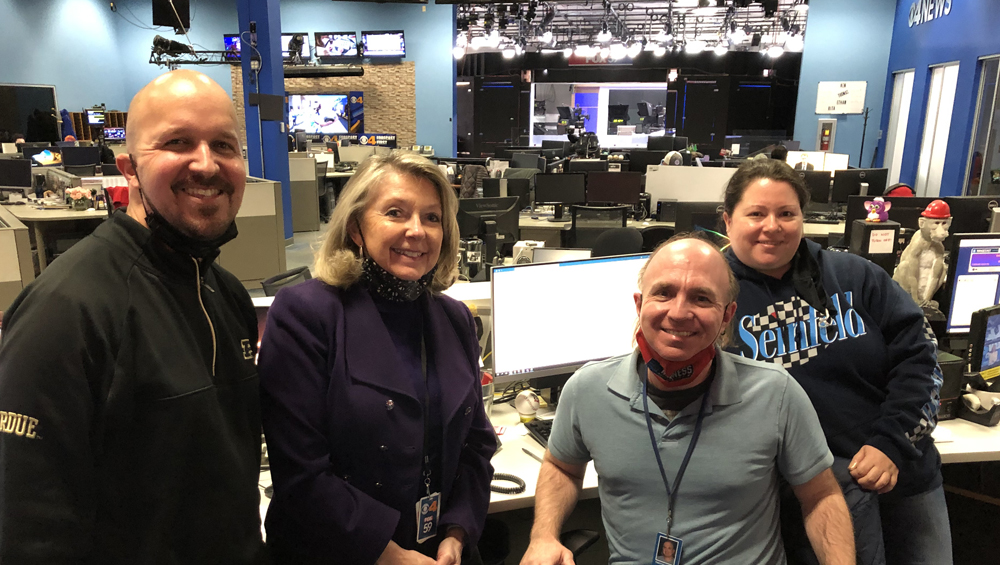
Prior to Ruthanne Gordon becoming senior planning manager for Nexstar’s WXIN (Fox)-WTTV (CBS) Indianapolis, she was an assignment editor for 33 years. Before that, she was a reporter and anchor for more than five years, bringing with her to the assignment desk an assortment of connections from her front-of-the-camera days that she continues to call upon. Her phone book has only ballooned bigger throughout her 45 years in news.
“I have quite a Rolodex,” Gordon says, “I think that’s what they wanted when I came to this position as senior planning manager.” Cops she first met doing stand-ups, she says, “are now the commanders here in town, so I’ve kept those cell numbers, and that’s where I have an advantage.”
Working as a journalist before manning the assignment desk also helps cultivate that vital instinct of what makes for a compelling newscast. However, the assignment desk is also a prime location for industry newbies to break in and learn — a lot — on the fly.
“You gotta pay your dues by working the weekends,” Elder says. “That was where I learned the most because you don’t have a lot of managers, so you have to make those on-the-spot decisions. So, I was able to make those mistakes on that weekend shift, but I was also able to learn from those mistakes and learn how to make good news decisions.”
“This is a great way of starting and learning,” Gordon says of the assignment desk gig. Calling it a way to “fast-track” those new to the industry, she adds: “You can jump off of this and go produce a show [or] jump in a truck and go do an interview.”
Kendra Gilbert, senior assignment editor at KING, had no experience in a TV newsroom before hopping into the assignment desk chair at a station in her home market of Fresno, Calif. Fresh out of college, she struggled to find work in print journalism, her focus of study in school. But that degree still meant she could sniff out a good story and, combining that sense with strong organizational and communication skills, she was confident she could fill the seat just fine.

She’s held an assignment editor position at one West Coast station or another for nine years running. She says to excel in the role one has to be comfortable working in “a fast-paced environment,” and have the ability to “turn on a dime” and “focus on one thing and switch to another.”
Collaboration Grows
Elder statesman Gordon says of the assignment editor job demands: “It keeps me young.” Both she and the more youthful Gilbert say the position has also become more collaborative in recent years.
“We do sort of have that gatekeeper role,” Gilbert says. Still, she continues, “there’s always this two-way exchange of information between the desk and the reporters.”
Assignment editors consider reporter strengths, areas of interest and experience when deciding in whose hands a story will be entrusted. But they also field pitches from reporters and engage in broad conversations about the day’s items of interest with various members of the team.
“Nobody runs on their own in here; we have a tight-knit group [and] we back each other up,” Gordon says of the group at her Nexstar stations. “If we have spot news … we all jump in, and that’s the key to a really good assignment desk. You give and take, and you have that flexibility that at the end of the day, we’ve covered it, we’ve got it, we’ve got angles that nobody else has thought of.”
Not only does the team effort behind story assignment potentially add layers and depth to an eventual package, but it reinforces the integrity of the news it delivers across an entire broadcast, day in, day out.
In the constant struggle to identify mis- and disinformation, while also presenting stories in appropriate context, “that is where a collective, collaborative culture of a newsroom saves you,” KING’s Wolfe says. “If you are, as a team, having editorial checks, conversations, diverse viewpoints, bringing different people in, then you can catch those things and catch yourself and find the right story.
“That’s why I think having a diverse newsroom is so key, because different people are going to see different things and think about different questions and weigh that story against their own experience …. Whether it’s a big newsroom or a small newsroom, getting people together to talk about stories is just really, really important.” she says.
Decentralized Approach
One would be hard-pressed to find a more profound example of the increasingly collaborative nature the assignment editor’s job has assumed over the past handful of years than the organizational structure at Lee’s Southern California Spectrum News channel.
In an effort to cover the market’s five counties, across a sprawling megalopolis, her channel employs an assignment editor manager and four individual assignment editors, each of whom are primarily stationed in different parts of the region: north, south, east and west. They report to the station’s office in El Segundo once per week on a rotating basis, but otherwise they’re out in the field, working closely with reporters as they scour for stories and continually develop relationships with sources.
Lee says the more decentralized arrangement allows for her newsroom to be less “reactive” — as others have been historically — and more “proactive,” engaging in “enterprise storytelling.”
“Of course, we still react, because there’s breaking news,” Lee says, “but when there is real enterprise storytelling, you’re working in advance, working your sources and your community and really becoming experts on the ground, and it’s been an amazing collaboration.
“That’s what has gotten lost, is the idea that, really, journalists should have their ears on the ground, they should be developing beats and sources, and they should be working with assignment editors — story planners — to figure out the best way to tell those stories together,” she says. “It’s been a really exciting team approach to newsgathering.”
Seeking Deeper Impact
Whether they’ve been part of an experiment in cutting-edge structural invention or traditionally clock into the newsroom and sit at a stationary desk throughout their shift, assignment editors bear the brunt of the responsibility to shuttle broadcasts away from coverage of police blotter-discovered stories, such as shootings, robberies, and fires. Today’s consumers are craving more from their TV news, and stories with farther-reaching impact have to be sought out by those tasked with assigning them to reporters.
“We definitely are trying to be mindful of stories that are affecting more people in our community,” says WRAL’s Elder. “Gone are the days of ‘If it bleeds, it leads.’ That was old school.”
Still, it’s not entirely true that crime and property destruction should completely be dismissed. “When it comes to your family’s safety, the safety of your business, being able to walk down the sidewalk in your city, that is super-relevant to our viewers,” Wolfe says. “The idea that crime is not relevant is the wrong approach. The right approach is: How do we add information and context? How do we stand for truth and hold people accountable? What does the data tell us about that crime? That’s where the impactful stories are.”
Weighing all these factors in choosing stories, maintaining a constantly updated contact database with identifying tags, ensuring that reports are factually concrete and so many other responsibilities, the assignment editor job is certainly not for everybody. But those who do it well can honorably take tremendous pride in their work, which, if nothing else, is undeniably relentless.
“You should never be bored on the assignment desk,” KING’s Gilbert says. “It’s not a place where you can complete one task and then kick back and say, ‘I’ve done it for the day.’ You should always be busy.”
About Michael Stahl
Michael Stahl is a journalist from New York City who’s covered a range of topics for Rolling Stone, New York Magazine, Bloomberg, the Village Voice, Quartz, Vice, InsideHook, Narratively and many other publications. You can see more of his work at www.michaelstahlwrites.com and connect with him on LinkedIn at https://www.linkedin.com/in/michael-stahl-writes/.
Reader Interactions
Mar 8, 2022 at 9:11 am
Great write up. I would add one piece of perspective on the ‘parts of the body’ metaphor. In my experience, the Assignment Desk can be the hands reaching out in the dark, or the ears listening for the important ‘sounds’ or the ‘eyes’ looking toward the horizon. All in addition to being part of ‘the brain.’ Ruthanne nailed it. The key is that a video based, broadcast/digital newsroom must have a desk, producers, reporters, and managers that act in a symbiotic relationship. Each must be able to quickly shift based on the news department’s overall vision, and always support each other.
Jun 13, 2022 at 9:24 am
I never knew how to write beautifully when I needed it, I spent Sleepless nights to write At least a more or less beautiful text, but as a result, I began to turn to similar writing services and my life became much easier and the texts are much better, because on such services the text professionals write, you just have to learn the text
Leave a Reply Cancel reply
You must be a logged in member to post a comment.
Log In Register Now
Related Stories
Lance Allan Named Sports Director At WDJT Detroit
Marlene guzmán & edgar olivares join ktmd houston news.

‘Kissing The Ring?’ MSNBC ‘Morning Joe’ Hosts Meet With Trump To Reopen Lines Of Communication
Trump confirmed the meeting in an interview with Fox News Digital. “I very much appreciated the fact that they wanted to have open communication,” he said. “In many ways, it’s too bad that it wasn’t …

Scaling The Mountain: How Gen AI Can Help Save Local TV
Six gen AI prompts that can help TV newsrooms unlock data, redefine their value proposition, streamline workflows and more.

NewsTECHForum: News Production And The Cloud
Tech leaders from NBC, Hearst, Sinclair and E.W. Scripps assess ongoing efforts to move news production into the cloud and the cost and latency issues they contend with along the way in a panel at …

About 20% Of Americans Regularly Get Their News From Influencers On Social Media, Report Says
The findings, drawn from a Pew Research Center survey of more than 10,000 U.S. adults and an analysis of social media posts posted this summer by influencers, provide an indication …
Meteorologist Nick Guzzo Leaves WIVB And Local TV
Briana brownlee makes her debut on wjxt jacksonville news.

Local News Is In Crisis. The Atlanta Journal Constitution Has A $150 Million Plan
‘morning joe’s’ scarborough and brzezinski visit trump: ‘it’s time to do something different’.

Associated Press To Cut 8% Of Staff In Layoffs, Buyouts
Kare exposes how a scammer is stealing thousands of home repair identities on google.

Investor Building Newspaper Chain Eyes Lee Enterprises, DallasNews
Florida billionaire David Hoffmann aims to create the second-largest newspaper group in America.
CNN Parent Warner Bros. Discovery Must Hand Over Financial Info If Subpoenaed As Defamation Trial Looms
Jessica gonzalez moves to kfox el paso evening news.


Trump Sues For Billions From Media He Says Is Biased Against Him
The president-elect intensifies his longstanding media hostility by filing lawsuits against the New York Times, CBS and others.

Trump Picks Campaign Media Team Head Karoline Leavitt As White House Press Secretary
The 27-year-old previously served as assistant press secretary during the president-elect’s first term in office.
A Week Since The Election And Social Media Is More Fragmented Than Ever

What Should Journalists Do When Facts Don’t Matter?
Trump chooses steven cheung as white house comms director, eic of scientific american resigns after anti-trump voter remarks, why joe rogan does and does not matter.
TV News Careers
Who Works in a Television Newsroom?
Dawn Rosenberg McKay is a certified Career Development Facilitator.
On-air personalities like anchors, reporters, and meteorologists are the most visible members of television news teams, but tv newsrooms are filled with many more people. Without them, our nightly or 24-hour broadcasts would cease to exist. Life in the newsroom is fast-paced, competitive, and exciting. It is also very stressful, which is something important to consider when deciding if one of these careers is for you. Since news happens around-the-clock, the staffing of newsrooms usually follows suit. Don't expect a 9 to 5 job. A career in tv news can mean having irregular schedules with long hours and meeting tight deadlines.
Sources: Bureau of Labor Statistics, U.S. Department of Labor, Occupational Outlook Handbook ; Employment and Training Administration, U.S. Department of Labor, O*NET Online
News Anchor
The news anchor introduces stories, interacts with reporters, and interviews experts on a news show. He or she sometimes provides analysis of, and commentary on, stories.
As the public face of the newsroom, the anchor secures viewers' trust and loyalty. Although he or she is just one member of the team, the audience identifies that person with the broadcast.
To become a news anchor , get a bachelor's degree in journalism. Expect to begin your career working as a reporter before becoming an anchor. If your goal is to eventually work for a network or for a television station in a major city, you will have to start by working in a smaller market .
Median Annual Salary (2017): $60,610
Number of People Employed (2016) : 5,700
Projected Job Growth (2016-2026) : 0 percent (no growth)
Projected Job Openings (2016-2026) : 0
Reporters are also in the public eye. They are usually in the midst of all the action, delivering news straight from the field. They may risk their safety as they report from war zones, storm-ravaged locales, or places hit by natural or human-made disasters. Reporters go out into communities to do spontaneous on-camera interviews with sources.
To be a reporter, major in journalism or communications in college. It is likely you will have to begin your career in a small market, just like anchors do. You could one day end up reporting in either a large city or for a national news show and may eventually become an anchor.
Median Annual Salary (2017): $45,420
Number of People Employed (2016) : 44,700
Projected Job Change (2016-2026) : -10 percent (Employment is expected to decline)
Projected Numeric Change (2016-2026) : -4,500
Broadcast Meteorologist
The tv weatherman is the reason many viewers tune into the news in the first place. How else would we know what to wear? The meteorologist's forecasts sometimes give us hope about upcoming days, and other times, quite literally, dampen our spirits.
Since meteorologists are scientists, as well as broadcast professionals, training in both areas is necessary. To be called a meteorologist, you will need to earn a bachelor's degree in meteorology or complete coursework in that subject. If you want to, instead, use an alternative title like weather forecaster, weatherman, or weather person, getting a degree or taking coursework in meteorology isn't required. A degree in journalism, communication, or speech will prepare you to report the weather on-air.
While meteorologists usually broadcast from the newsroom, they sometimes travel to the story. You may have to report in the midst of a storm or after a natural disaster has struck.
Median Annual Salary (2017): $88,850
Number of People Employed (2016) : 10,400 *
Projected Job Growth (2016-2026) : 12 percent (faster than the average for all occupations) *
Projected Job Openings (2016-2026) : 1,300 *
*This includes all atmospheric scientists and meteorologists, including a relatively small number of broadcast meteorologists.
Web Master / Social Media Manager
While a news station's webmaster or social media manager isn't visible to the public, he or she communicates information just like an anchor, reporter, or meteorologist does. A webmaster maintains a newscast's website and blogs. A social media manager posts news stories on, and communicates with viewers through, social networking sites like Facebook, Twitter, and Instagram.
Webmasters and social media managers collaborate with news directors, producers, anchors, reporters, meteorologists, and writers—in other words, anyone who needs to interact with the public via the website or social media outlets. Experience in journalism, mainly through jobs in television newsrooms, as well as expertise in online communications and social networking are essential.
Median Annual Salary (2017): $67,990
Number of People Employed (2016) : 162,900
Projected Job Growth (2016-2026) : 15 percent (much faster than the average for all occupations)
Projected Job Openings (2016-2026) : 24,400
Producers oversee newscasts. The executive producer coordinates every aspect including hiring, firing, and managing personnel and also tending to business and financial matters. At larger stations, associate producers assist executive producers, and together they supervise a staff of news producers.
A producer writes scripts, edits video, and collaborates with reporters who are out in the field. He or she also works closely with the newscast's anchor.
A background in news broadcasting is needed to do this job. Most employers require a degree in journalism or a related field. You will begin your career as a news producer and may advance first to associate and then to executive producer.
Median Annual Salary (2017): $59,520 *
Number of People Employed (2016) : 134,700 **
Projected Job Openings (2016-2026) : 16,500 **
*Includes producers and directors who work in television and radio broadcasting
**Includes all producers and directors, for example, those working in the motion picture, advertising, and performing arts industries, in addition to broadcasting.
News Director
News directors plan news broadcasts. They choose and schedule content, making them the people most responsible for what viewers see on the air.
The news director is in charge of quality control. He or she monitors stories for accuracy and sees that rules and regulations are followed.
To prepare for this career, you should earn a bachelor's degree in journalism or mass communication. It is likely you will begin your career by working as an assistant news director. Jobs in smaller markets sometimes lead to those in larger cities or on national newscasts.
News Writer or Editor
Television news writers and editors create scripts for anchors, write teases to promote stories, and produce content for the newscast's website. They must be able to capture viewers' attention with the intent of keeping them from changing channels or encouraging them to tune in at a later time.
Assignment desk editors track stories and dispatch reporters and photographers to cover them. They must react quickly to breaking news.
Writers and editors collaborate with reporters, anchors, webmasters, social media managers, news directors, and producers. They must be able to adhere to tight deadlines, often composing breaking stories on the fly.
To become a news writer or editor, earn a bachelor's degree in journalism or communication. Excellent writing and editing skills are essential.
Median Annual Salary (2017): $61,820
Number of People Employed (2016) : 131,300
Projected Job Growth (2016-2026) : 8 percent (as fast as the average for all occupations)
Projected Job Openings (2016-2026) : 10,000
Camera Operator
To bring a visual image of the news to viewers, a camera operator must capture video either in a studio or out in the field. He or she chooses the proper equipment, sets it up, and operates it.
Multiple camera operators in a studio capture various aspects of a broadcast. A single operator usually accompanies a reporter to the scene of a news event. He or she may also record visual content to stream on the station's website.
Earn a bachelor's degree in film, broadcasting, or communication if you would like to be a camera operator. Most jobs require flexibility in scheduling since news can break at any time.
Median Annual Salary (2017): $53,550
Number of People Employed (2016) : 25,100
Projected Job Growth (2016-2026) : 7 percent (as fast as the average for all occupations)
Projected Job Openings (2016-2026) : 1,800
Broadcast Technician
It is a broadcast technician's responsibility to make sure viewers both see and hear a news broadcast. Without his or her expertise, the signal transmitted from the station or field may not be clear or strong enough. He or she regulates audio and sound quality, monitors broadcasts in real time to make sure they are going as they should, and selects the transmission equipment.
Although you can enter this field with just a high school diploma , many jobs require an associate degree in broadcast technology, electronics, or computer networking.
Median Annual Salary (2017): $39,060
Number of People Employed (2016) : 34,000
Projected Job Change (2016-2026) : -3 percent (Employment is expected to decline)
Projected Numeric Change (2016-2026) : -1,100
Audio Engineer
Audio engineers, including sound engineering technicians and audio equipment technicians, operate the equipment that transmits the sound associated with news broadcasts to households within the viewing area. They regulate volume levels and sound quality and consult with producers and news directors.
You can attend a year-long vocational program to train for this occupation. You may instead earn an associate degree in audio engineering.
Median Annual Salary (2017) : $42,190 (audio equipment technicians); $55,810 (sound engineering technician)
Number of People Employed (2016) : 83,300 (audio and video equipment technicians); 17,000 (sound engineering technicians)
Projected Job Growth (2016-2026) : 13 percent - audio and video equipment technicians (faster than the average for all occupations); 6 percent - sound engineering technicians (as fast as the average for all occupations)
Projected Job Openings (2016-2026) : 10,700 - audio and video equipment technicians; 1,100 - sound engineering technicians
News Photographer
A news photographer records images that allow viewers to see current events as they happen. Commonly called photojournalists, they take still images and digital video.
Earn a bachelor's degree in photography to get a job in this field. While in school, develop a portfolio to showcase your work.
Median Annual Salary (2017): $45,635
Number of People Employed (2016) : 147,300
Projected Job Change (2016-2026) : -6 percent (Employment is expected to decline)
Projected Numeric Change (2016-2026) : - 8,300
- What Does an Assignment Editor Do?
- What Does a TV News Director Do?
- What Does a TV News Anchor Do?
- What Does a TV Reporter Do?
- Best Cities to Work in If You Want a Dream Media Job
- Conducting a Good Television Interview
- Get Higher Ratings With These TV Sweeps Tips
- Communications and Media Careers
- How to Become a TV News Anchor
- The Pros and Cons of Media Industry Careers
- Meteorologist Job Description
- What Does a News Anchor Do?
- Entertainment Careers
- The 9 Most Hated Professions
- Careers By Field or Industry
- Makeup Artist (Theatrical and Performance)

IMAGES